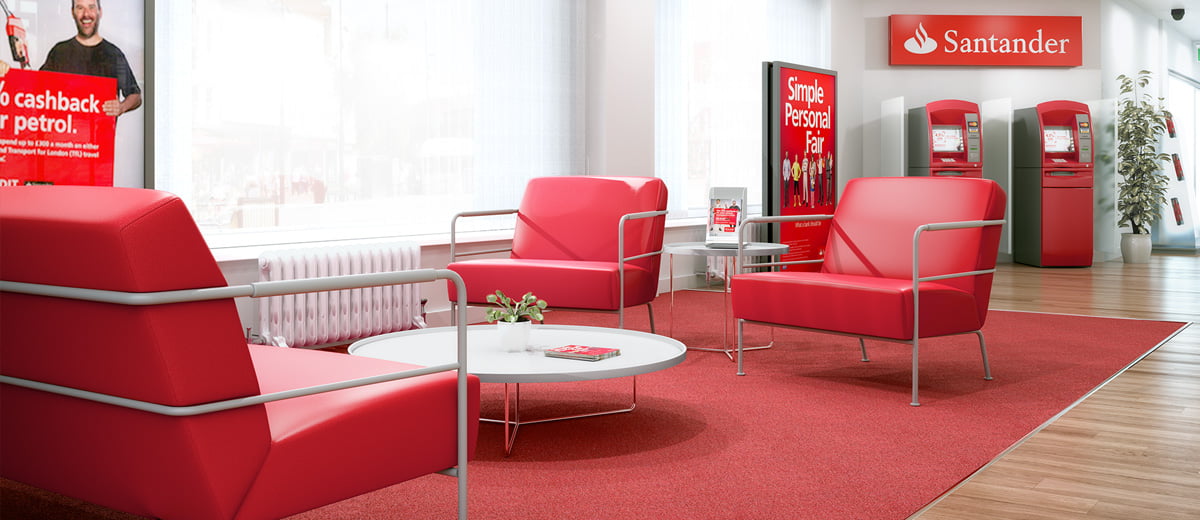
Increasingly large clients want bespoke items, such as this custom ‘Santander Red’ fabric designed and manufactured by Chieftain Fabrics for Pledge, pledgechairs.co.uk
Recently, Design Insider noted that a smooth specification process can help ensure a project impresses while saving time and money for client, designer and supplier.
Although we live in a world of constant change, both sides need to retain a level of flexibility.
Design Insider also notes how;
Traditionally there has been a lot of bespoke work…but that hasn’t really been the case for fabrics, which are much more intensive to set up. This has changed – and not just at the top end of the market. Big franchises want something unique for their brand.
Gordon points out that ‘supplier performance excellence gives companies competitive advantage. To the extent that suppliers perform well, companies enjoy a competitive boost, since this performance is reflected in lower costs, improved responsiveness to customers, better-quality goods and services and technological advantage’. Design Insider also notes that the specifier should consider whole-life costs when selecting various products for a fit-out. Products can appear cheaper in the short term, but often they won’t come with sufficient warranties or guarantees. In specification it tends to be all about value for money as opposed to bottom-line costs.
Keeping up with a fast moving marketplace is also a challenge to many designers who have an opportunity to offer innovative solutions. One recent development, according to the telegraph.co.uk, is the phenomenon dubbed ‘showrooming’, in which people use their phones to examine whether their prospective purchases are available cheaper online or elsewhere. This places conventional Contract suppliers with a real challenge as ‘showrooming’ offers immediate transparency. However, this can also lead to problems as contract suppliers specialise in ensuring their supplied products meet the special requirements and regulations that apply to all furniture used for commercial purposes – fire regulations, levels of usage, resistance to abrasion, pilling, soiling, seam strength, etc.. This also forces suppliers to be more flexible too. According to Design Insider, ‘The whole relationship between supplier and client has changed. It’s much more stressful but much more creative’.
In summary, there is a challenge of specification, but a clear, knowledgeable, specification process can ensure a project impresses and ultimately saves the client time and money.
References
Slideshare.net, (2015). The Art of Planning and Writing Specifications and Requirements . [online] Available at: http://www.slideshare.net/Tanel/the-art-of-planning-and-writing-specifications-and-requirements-ism-conference-0410 [Accessed 28 May 2015].
Thebcfa.com, (2015). Design Insider. [online] Available at: http://www.thebcfa.com/res/Design%20Insider%202015%20Smaller1.pdf [Accessed 28 May 2015].
Gordon, S. R. (2008) Supplier Evaluation and Performance Excellence: A Guide to Meaningful metrics and successful results. Florida, USA: J. Ross Publishing.
Warman, M. (2013). The future of shopping: from high street to iStreet. [online] Telegraph.co.uk. Available at: http://www.telegraph.co.uk/technology/news/9821702/The-future-of-shopping-from-high-street-to-iStreet.html [Accessed 29 May 2015].
